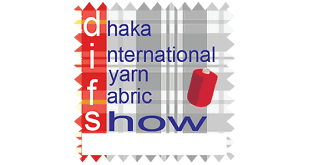Between 2001 and 2014, the sector witnessed a 9% CAGR. However, over the past 10 years, textile exports from India stagnated due to the expiry of the EU trade treaty, COVID and high channel inventories.
Globally, the size of the textile trading industry is estimated at $800 billion, with India’s export contribution being around $35 billion. Recently, the government of India announced a road map for the industry to reach $100 bn by 2030, implying a 19% CAGR over the next six years. This would not only entail investments of close to Rs 200,000 crore, but also generate direct employment for 3 million people.
India Textiles sector poised for a big growth
Between 2001 and 2014, the sector witnessed a 9% CAGR. However, over the past 10 years, textile exports from India stagnated due to the expiry of the EU trade treaty, COVID and high channel inventories. While growth aspirations may look stretched, besides ‘China plus one’, two key catalysts – PLI and FTA with the EU/UK – could help India achieve its lost glory in textiles.
India emerging as a strong player:
MNCs are now increasingly looking to diversify their supply lines away from China due to geopolitical tensions as well as high labour costs.
This has led to a potential shift of exports from China towards other countries. Some of the biggest global brands have already begun reducing their exposure to China. We believe India’s competency across factor cost and a well-established textile ecosystem (across cotton segment) will allow it to benefit from the ‘China plus one’ theme.
Despite Bangladesh being a very strong player in garments trade due to FTAs and low labor costs, the recent political turmoil may force retailers to evaluate other options, with India once again emerging as a country of choice.
Apparels and home textiles to lead the way:
Within the textile sector, we remain most excited about garmenting and home textile space rather than the commodity-based weaving, spinning and yarn manufacturers who are prone to cyclicality. What excites us about garmenting is global retailers looking to diversify away from China and now Bangladesh as well, along with vendor consolidation. This means certain large garment manufacturers will get disproportionate share in contracts, with Indian companies being already strategically positioned with retailers. Moreover, technical textiles, used in human protection (for doctors, fire fighters, Army), industrial belting, ropes etc, are growing at a fast pace owing to domestic demand and export opportunities.
Building blocks in place to create a strong garmenting industry:
Garment is a labour-intensive industry and has been fragmented with no company with above $1.5 bn in revenue.
To attract investments and generate employment, certain states are providing labour subsidies to companies and trying to provide a holistic ecosystem for manufacturers. We are also witnessing a trend towards consolidation, wherein larger manufacturers are acquiring good production facilities or companies with diverse client bases. Such M&As help companies offer a wider product boutique, cross-sell their offerings, negotiate better with customers and vendors and ultimately become a supplier to MNC retailers.
FTAs with UK and EU could be a game changer:
Currently, India does not have FTAs with Europe and the UK. As a result, due to higher import duty, India’s share in readymade garments and home textiles has been negligible in these countries. With FTA negotiations in the final round, opportunities emerge as a whole new market opens up for home textile and garment players.
Similarly, the government’s focus on PLI schemes and incentivising the textile industry, creating an ecosystem for textiles, will help companies achieve the target set by the Centre.
Financials to improve as opportunities galore:
The combined EBITDA of the textile sector in India grew at a 9% CAGR over the past decade. With focus on manufacturing, especially on garments, home textiles and technical textiles, we believe the sector can grow faster.
Over the next few years, we believe certain pockets in the textile sector will offer wealth creating opportunities and prefer integrated companies or companies which are up in the value chain (garments, home textiles) vs pure yarn and fabric manufacturers.
 4Textile.com World Textile & Apparel Industry Events, News
4Textile.com World Textile & Apparel Industry Events, News







